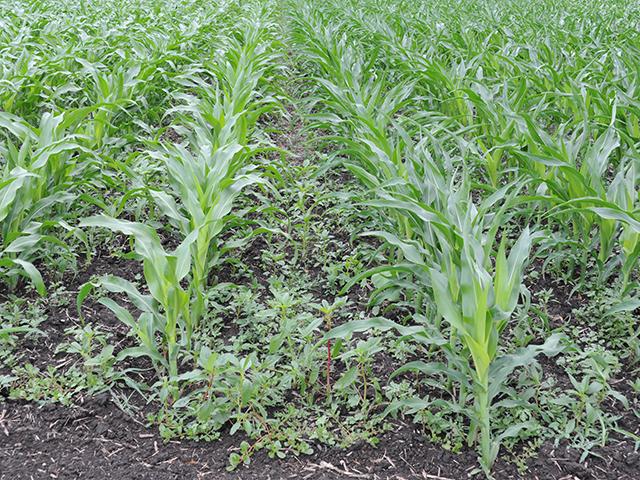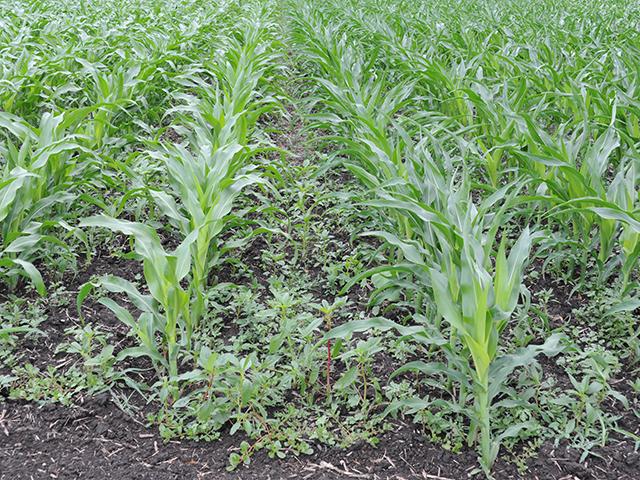Production Blog
Before Spraying Postemergence Herbicide in Corn, Check the Cutoffs
JEFFERSON CITY, Mo. (DTN) -- With the corn growing like a proverbial weed, so too are the real ones. What isn't growing, however, are the windows in which postemergence herbicides can be applied.
Across the country, the 2025 corn crop is off and running. According to this week's USDA Crop Progress report, 87% of corn had emerged as of June 8, right on track with the five-year average. But in many parts of the Corn Belt, rainy and/or windy conditions have kept sprayers parked, yet all the while, the corn keeps growing.
Larry Steckel, University of Tennessee Extension weed specialist, notes that with all the heat and water, corn is putting on a new leaf every three days. For some fields, time is running out for safely applying herbicides over the top.
P[L1] D[0x0] M[300x250] OOP[F] ADUNIT[] T[]
Not all herbicides have the same corn growth stage cutoffs. For example, 2,4-D has a cutoff of 8 inches in height, or around the V5 stage, while atrazine is restricted once the crop reaches 12 inches tall, or the V8 stage.
Other popular chemistries such as glyphosate, glufosinate and dicamba allow for the crop to be taller, but not necessarily further in growth stage. Glyphosate is limited to 30 inches, or V8, while the glufosinate cutoff is 24 inches, or V7. The dicamba cutoff varies with the rate of active ingredient applied. Spray a pint per acre, and the cutoff is 8-inch-tall corn. Cut the rate to a half-pint per acre, and the corn can be 36 inches tall.
Herbicide labels will often state that application is restricted by whichever is reached first, either the height or growth stage, so it's good to review before spraying. Also, Steckel reminds growers that when tank mixing herbicides, the cutoff is always determined by the most limiting factor.
In an email to DTN, the weed scientist said that he put together this quick chart with some of the most popular postemergence herbicides: https://news.utcrops.com/….
University of Minnesota Extension published a similar, but slightly longer, list last summer: https://blog-crop-news.extension.umn.edu/….
Jason Jenkins can be reached at jason.jenkins@dtn.com
Follow him on social platform X @JasonJenkinsDTN
(c) Copyright 2025 DTN, LLC. All rights reserved.






Comments
To comment, please Log In or Join our Community .